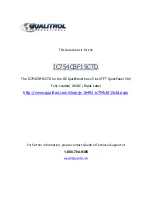
12
www.gpelectric.com
Hybrid System: A power system consisting of two or more energy sources (e.g., a
PV array and a wind generator).
Hydrometer: A device used to measure the specific gravity (SG) of the electrolyte in
a flooded battery. A very accurate way to see the true charge of a battery.
Insolation: The solar energy received at a place over a given period. May be expressed
as sunhours per day, watts per square meter per hour, or any number of other units.
Inverter: A device that converts DC electricity to AC.
Isolation Diode: A diode application that prevents one segment of an array from
interacting with another array segment. Usually used in situations where two parts of
an array are facing in different directions therefore one part of an array may experience
shading while the other does not. Prevents array energy from flowing backwards through
a low voltage string of the array. May also serve the function of blocking diode.
Maximum Power (peak power): The point of a solar array, panel or module output
where the product of Imp and Vmp (Pmax, measured in watts) is maximized. The
points used to calculate Pmax are Imp (current @ max power) and Vmp (voltage @
max power).
Module: A number of solar cells electrically connected, and protected from the
environment usually by an aluminum frame covered with a pane of glass. A module is
self-contained and not sub dividable, therefore providing a single electrical output.
NOCT (Nominal Operating Cell Temperature): the temperature at which PV cells
in a module operate under Standard Operating Conditions (SOC), which are: irradiance
of 0.8 kW/m2, 20ºC ambient temperature, and average wind speed of 1 m/s, with the
wind oriented parallel to the plane of the array, and all sides of the array fully exposed
to the wind.
Open-Circuit Voltage (Voc): Refers to a photovoltaic device’s voltage potential when
it is disconnected from the rest of the PV system.
Panel: A group of photovoltaic modules (or single module) mechanically mounted on
a single frame.
Parallel Connection: Electrical connection where the positive terminals of a number
of devices are connected together, as are their negative terminals. The output voltage
is usually limited to the device with the lowest voltage, and the total current is the sum
of the current of all the devices.
Photovoltaic (PV): Capable of producing a voltage when exposed to radiant energy,
especially light.
Regulator: See “Charge Controller” definition.
Sealed Batteries: Electrolyte will not spill out and gassing is kept to a minimum. A
sealed battery is maintenance free and may be installed in several orientations.
Series Connection Electrical connection where the positive terminal of one device is
attached to the negative terminal of the next in a series string; in this connection, the
string voltage is the sum of the device voltages and the string current is limited to the
current of the least productive device in the string.
Short-Circuit Current (Isc): Refers to a PV device’s current output when the positive
terminal is directly connected to the negative terminal.
Specific Gravity: In relation to a flooded battery, it is the density of the “electrolyte”
compared with the density of water thereby measuring the battery state of charge.
Standard Operating Conditions (SOC): A set of reference PV device measurement
conditions consisting of irradiance of 0.8 kW/m2, 20ºC ambient temperature, and
average wind speed of 1m/s, with the wind oriented parallel to the plane of the array,
and all sides of the array fully exposed to the wind.
RV Kit Installation
RV Kit Installation
RV Kit Installation
RV Kit Installation
RV Kit Installation


































